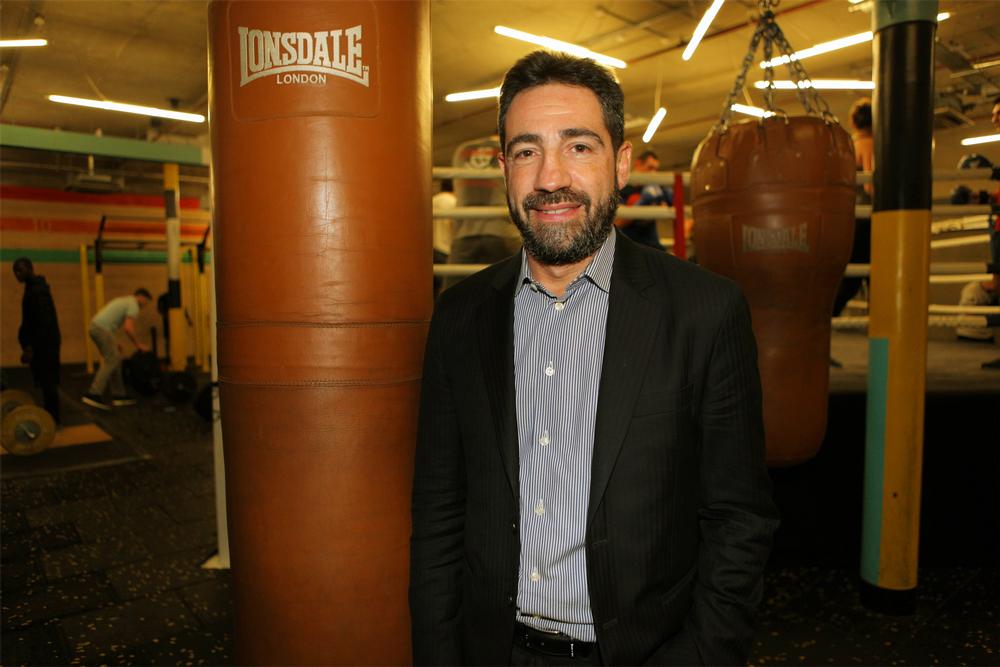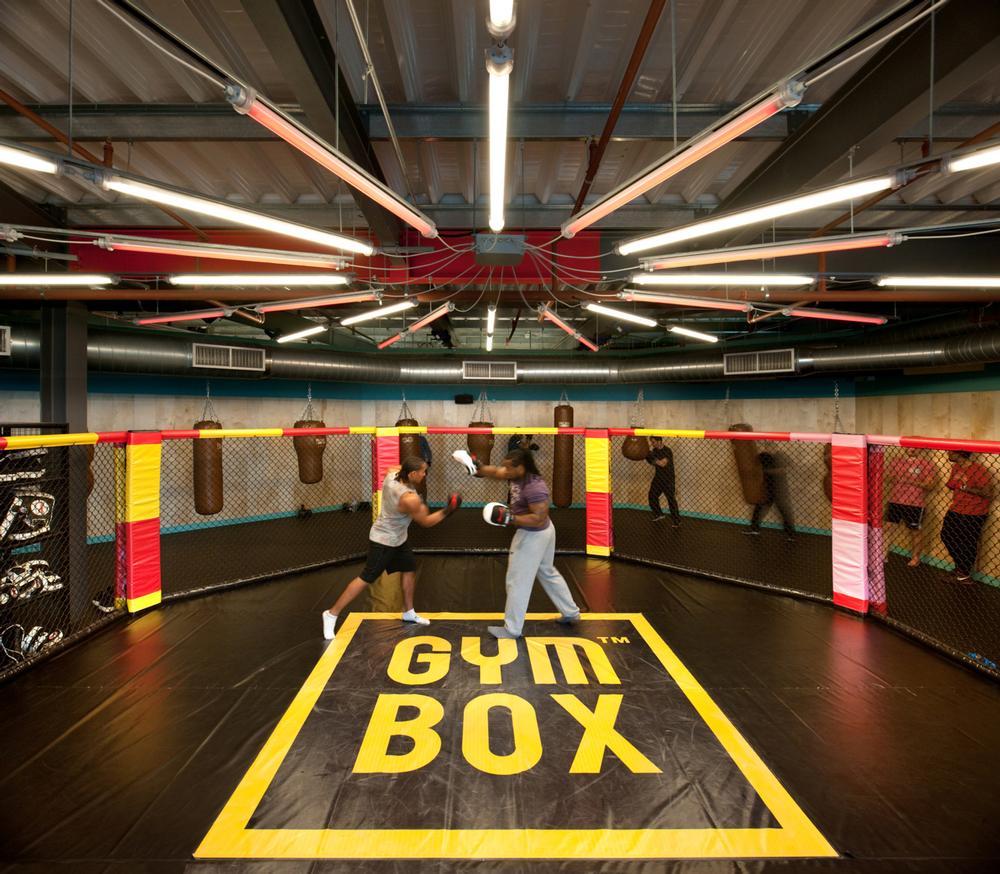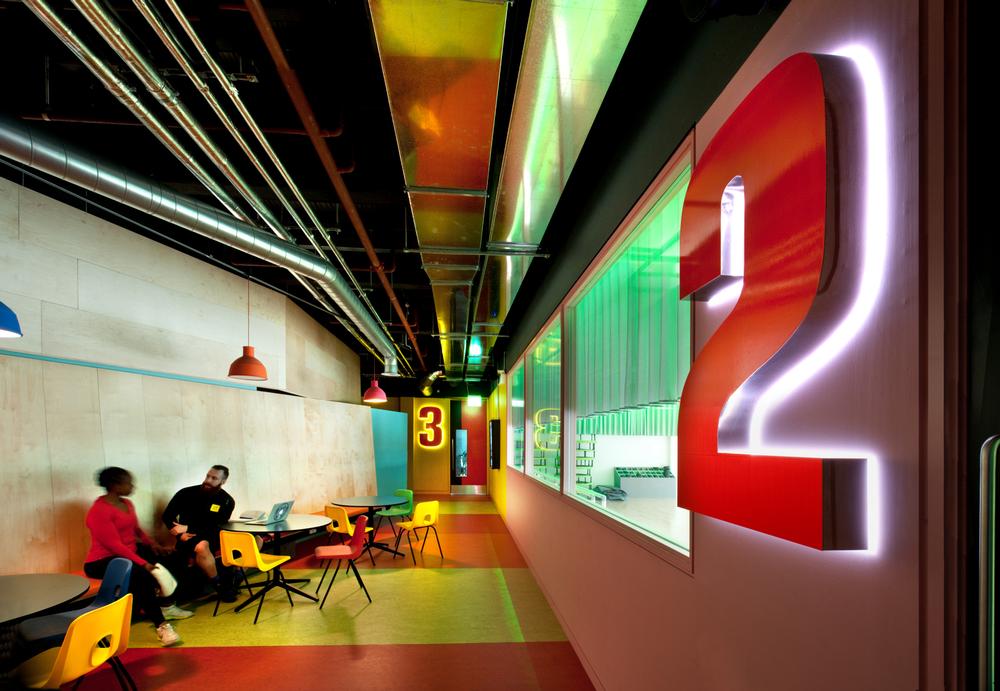I visit the new Gymbox in Westfield Stratford, east London, just two weeks after its opening, with the club still in the final stages of decoration and snagging – but it already has a real buzz to it, not to mention a much busier gym floor than I’d expect at 10.00am on a Monday.
“We opened with 2,000 members and already have 800 people using the club each day,” confirms Gymbox founder and CEO Richard Hilton when we sit down for a chat after a tour of the facilities.
Although he admits there’s always an early days surge of people using the gym at a brand new club, nevertheless this sort of usage seems to be pretty standard across all Gymbox sites. “Eighty-seven per cent of members use Gymbox clubs once a week,” Hilton tells me. “And each club is visited by around 1,000 members a day from a typical membership base of around 3,000.
“We’re also at a record number of members: all but one of our seven clubs are at their highest ever membership; the one that isn’t is just 50 members short.”
A big part of that is down to the company’s ongoing investment in its sites. “We have a policy of ‘no tired clubs’,” says Hilton. “People are always very keen to throw the spotlight on their new sites, but for me you have to look at an operator’s old clubs. That’s how you see the strength of the brand.
“Similarly, although people have been calling this our flagship club, actually I’d just call it a well-executed club. I don’t think you should create one flagship: all your clubs should be flagships. If we do something that works well in a new club, we’ll put it into our old clubs too.”
Establishing a heartbeat
All that said, I’m in Stratford to see the new club – and it’s one I’d very happily be a member of, even though the pumping dance music reminds me I’m at the upper end of its target age range.
Created within a space built specifically for Gymbox by Westfield – “Westfield understands brands and wanted Gymbox as its gym brand,” says Hilton – it’s colourful and light and it makes you want to work out. There are floor to ceiling windows in the three studios – although blackout blinds and a top-of-the-range lighting system allow the instructor to create whatever mood they require – and a glass-sided gym with fantastic views over the Olympic stadium and the ArcelorMittal Orbit (the curving red sculpture next to the stadium). The CV floor has even been tiered so, no matter which row you’re in, you get a view of the stadium while you’re working out.
The main gym floor also offers a large resistance area – there’s a fairly equal split space-wise between CV and strength – and the whole room is brought to life with brightly striped metal girders as pillars, neon lighting and Bose speakers overhead, and live DJs.
On the same upper floor of the club is another gym area for heavier lifting, functional training and martial arts. There’s a sledge track, ropes, plyoboxes, soft medicine balls, a whole row of squat racks – which have also been painted in bright colours – and a vast Octagon surrounded by punch bags and a few bits of cardio (bikes, Turbo Trainers and SkiErgs) for functional classes and PT.
“We do classes pretty much everywhere in the club,” says Hilton. “At peak times, there’ll be a class going on in each of the three studios, in the functional area and in the Octagon. That’s a total of around 120–150 people all doing classes at once.”
That’s not surprising given it’s really in the area of group exercise that Gymbox sets itself apart. “Classes are the heartbeat of our clubs,” agrees Hilton. The design and location of the large studios reflect this: they’re the first thing you see as you walk past reception, with a touchscreen board promoting the diverse timetable. One-way mirrors allow exercisers to see a full wall of mirror while those outside can get a taster of what’s going on in the class, and the cycling studio features lasers and a leaderboard.
“We design all our own classes and change the timetable every quarter, introducing four or five new creative slots each time – so at the moment we have things like twerking, drumming-based Pound, rave and Nae Nae,” says Hilton. “Those ideas might come from our team – they might have got an idea from a film, or maybe even a dance they saw someone doing at a wedding – or from our members.
“Everyone’s allowed to be creative and you mustn’t be embarrassed to make mistakes – some things will always work better than others, and our members never hold it against us. They just tell us and we change it.
“We have around 90 classes a week in each club, and every single class is always booked up. Over 60 per cent of our members do group exercise.”
Growth potential
This class-focused approach was inspired by the time Hilton spent working in advertising in New York, between 1990 and 1997. “I used to go to Crunch and the classes were utterly unique,” he says. “There was nothing like it in London, so when I came back I put together a business pitch for a new gym concept. I wanted to create a gym business with a distinctive look and feel that inspired and compelled you to exercise. It would be targeted at 18- to 40-year-olds, and – drawing on my advertising background – we would very much speak their language. That means Gymbox is a polarising brand – you either love it or hate it – but I believe you have to have confidence in what you’re saying and be consistent with your brand at all times.
“I wanted to use interior designers and light designers and sound engineers, not gym designers. And I wanted the heartbeat to be the classes – to ensure these really differentiated us.
“I needed £2.5m, but at first I couldn’t raise it. Then I approached Fitness First and they immediately loved it, putting in £2m. That was in 2001, and I opened the first club in Holborn in September 2003.”
I ask Hilton about some of the quirkier PR stunts Gymbox has done in the past, and he says: “We had to get our brand on the map, but our approach is more sophisticated now. It’s more about word-of-mouth and social media.
“The challenge now is how to keep the creativity in the business as it grows. It feels like a start-up still – people still think we’re the new kid on the block – so how can we maintain that, going from being a cool small business to a cool bigger business?”
Because the business is certainly growing. Having received a cash injection from Octopus Ventures in 2010, which helped it grow from three to five clubs, it then received £10m from the Business Growth Fund (BGF) in 2014 – the investor at Octopus had moved to BGF – as well as an additional £7m in fresh loans.
“The original idea was to open another three clubs, but the two we’ve already opened – Old Street and Westfield Stratford – are already doing so well that we’re now going to open four,” says Hilton. “We’ll open our eighth club in Victoria in October or November 2015, and there’s another central London site we’re in the process of signing.
“After that, it’s really a case of balancing how big the business can be versus where I can take it myself.
I believe it has huge potential.
“London is core for the brand, but it could also work well in other big UK cities – Leeds, Manchester, Liverpool, Birmingham, Newcastle – and internationally. That’s not on my radar though. I want to continue what we’re doing, take small steps and do it well. If the business ever gets that big, it may or may not be while I’m in charge.”
All of which sounds like he’s getting ready to move on, I suggest. “The business is not for sale,” clarifies Hilton. “But it’s a business, not my personal pension fund or a lifestyle. If at some point I’m approached by someone with the right money, who I feel is a safe pair of hands – willing to keep the management team intact and maintain our brand and our culture – and who has a better skillset to take the business even further… There’ll be a time when that might happen. But I don’t think it’s right now.”























































